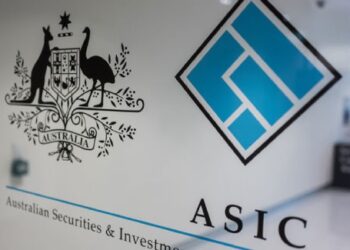The work test exemption measure was first announced in the federal budget this year and will allow Australians aged 65 to 74 with a total superannuation balance below $300,000 to make voluntary contributions for 12 months from the end of the financial year in which they last met the work test.
Treasury has now released draft legislation and regulations for the measure and is seeking feedback by 26 October. You can access it here.
Total superannuation balances for members will be assessed based on the balance for the member at the end of the previous financial year, according to the exposure draft.
Assistant Treasurer Stuart Robert said the legislation will give eligible older Australians an extra year to boost their superannuation, “so they can better prepare for retirement”.
Mr Robert said individuals will also be able to access unused concessional cap space to contribute more than $25,000 under existing concessional cap carry-forward rules during the 12 months.
“Existing annual concessional and non-concessional caps of $25,000 and $100,000, respectively, will continue to apply to contributions made under the work test exemption,” he said.
Treasury has made it clear in the explanatory memorandum (EM) that allowing individuals to trigger the bring-forward rules through contributions made under this work test exemption is not the intent of this policy.
The EM includes an example, which explains that individuals will be prevented from accessing the bring-forward arrangements if they can only make contributions through the work test exemption.
In the example, the member called Jake is not gainfully employed during the 2019-20 financial year and therefore does not satisfy the work test for that year.
Jake worked part-time for 12 hours a week during the 2018-19 financial year and meets the other criteria for qualifying for the work test exemption for the 2019-20 financial year.
As Jake’s voluntary contributions of $123,000 are only accepted by the fund due to the work test exemption, the contributions are considered to be “work test exemption contributions”, the EM states.
“Jake is 64 at some time during the 2019-20 financial year and therefore meets the age criteria for accessing the bring-forward option for non-concessional contributions for the 2019-20 financial year,” it said.
“For simplicity, assume the general non-concessional contributions cap for the 2019-20 financial year is $100,000 and that Jake’s voluntary contributions of $123,000 are treated as non-concessional contributions for the 2019-20 financial year.”
The EM stated that while it may appear that Jake’s non-concessional contributions for the 2019-20 financial year exceed the general non-concessional contributions cap, under the amendments in the schedule, Jake’s “work test exemption contributions must be excluded”.
“Jake’s non-concessional contributions excluding his work test exemption contributions do not exceed the general non-concessional contributions cap ($123,000 minus $123,000 does not exceed $100,000),” it said.
“Therefore, Jake would not be eligible to access the bring-forward arrangements in the 2019-20 financial year. This outcome is appropriate because Jake has relied on the work test exemption to make contributions for that year and without the exemption, Jake would not have any contributions to trigger the bring-forward arrangements.”
Commenting on the measure earlier this year, Fitzpatricks Private Wealth head of strategic advice Colin Lewis said that while it will only apply to those with a total super balance of $300,000 or less, it will give those members an opportunity to do an extra year’s contributions after the year in which they meet the work test, which will help to “bolster their super”.
“They provide an example [in the budget papers] where an individual nearly doubles what they had in super from the ability to use the catch-up contributions together with a non-concessional contribution for that year, so it’s not a bad measure,” said Mr Lewis.



Clear as mud! Off to read the actual draft legislation. Simple Super?
The backtracking on the original proposal of no work test under age 75 means we now have a list of complex laws for any member seeking to contribute between ages 65 -75. Surely we should say enough is enough. Where are the Associations on this?
Why so complicated, if someone has below $500,000 I would allow NCC with no work test up to age 75. Give people a chance.
I really can’t understand the logic for preventing the bring-forward NCC rule from being exercised under the work test exemption. If anybody knows the reasoning it would be good to hear from you.
You have to wonder why we have to make it so hard to navigate for consumers. Imagine a consumer trying to navigate this themselves – or even understand advice they have been provided.
It’s a concessional contribution
So what does Jake do with the remaining $23,000?
The Government’s intent is seemingly clear. Focussing on NCC, the work test exemption is intended to allow $100,000. The policy intent is that the work test exempt contributions cannot be the sole reason for someone who turns 65 in a financial year to trigger and use the bring-forward rule.
Going back to Jake, one imagines that the $23,000 is an excessive NCC and has to be refunded from the super system in time